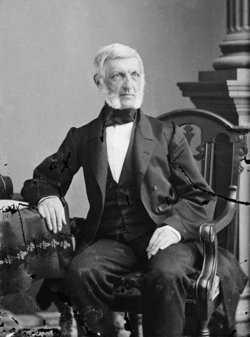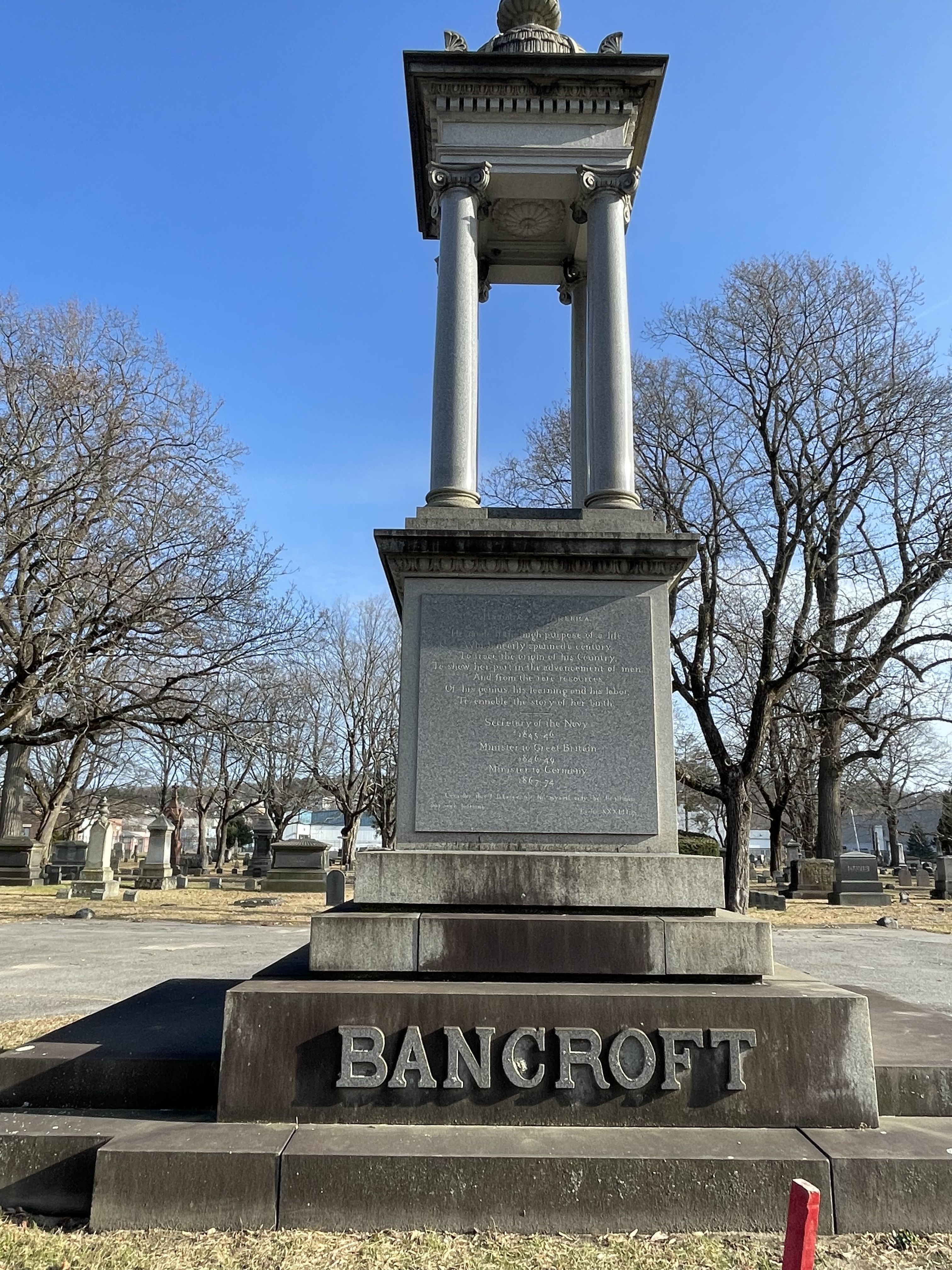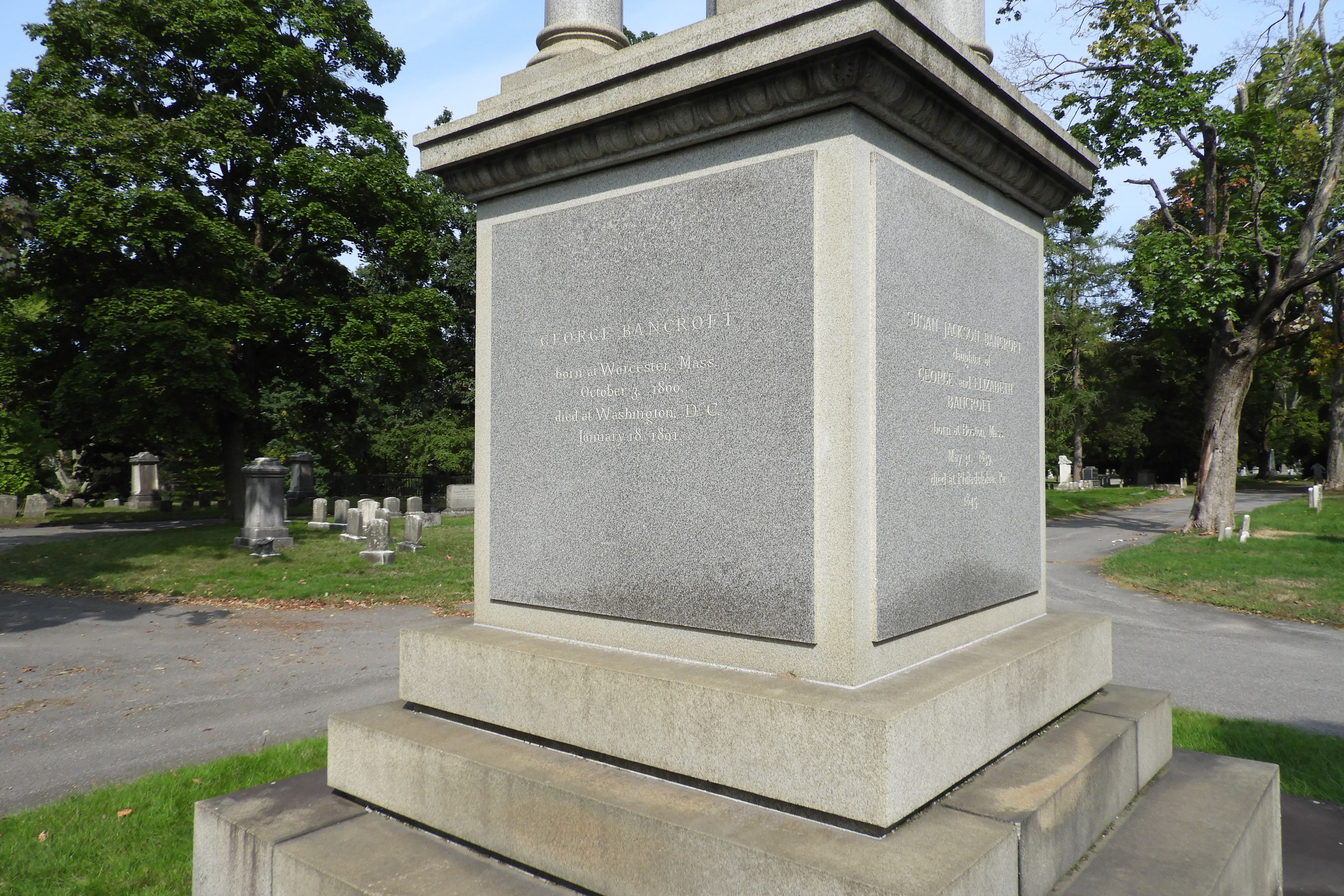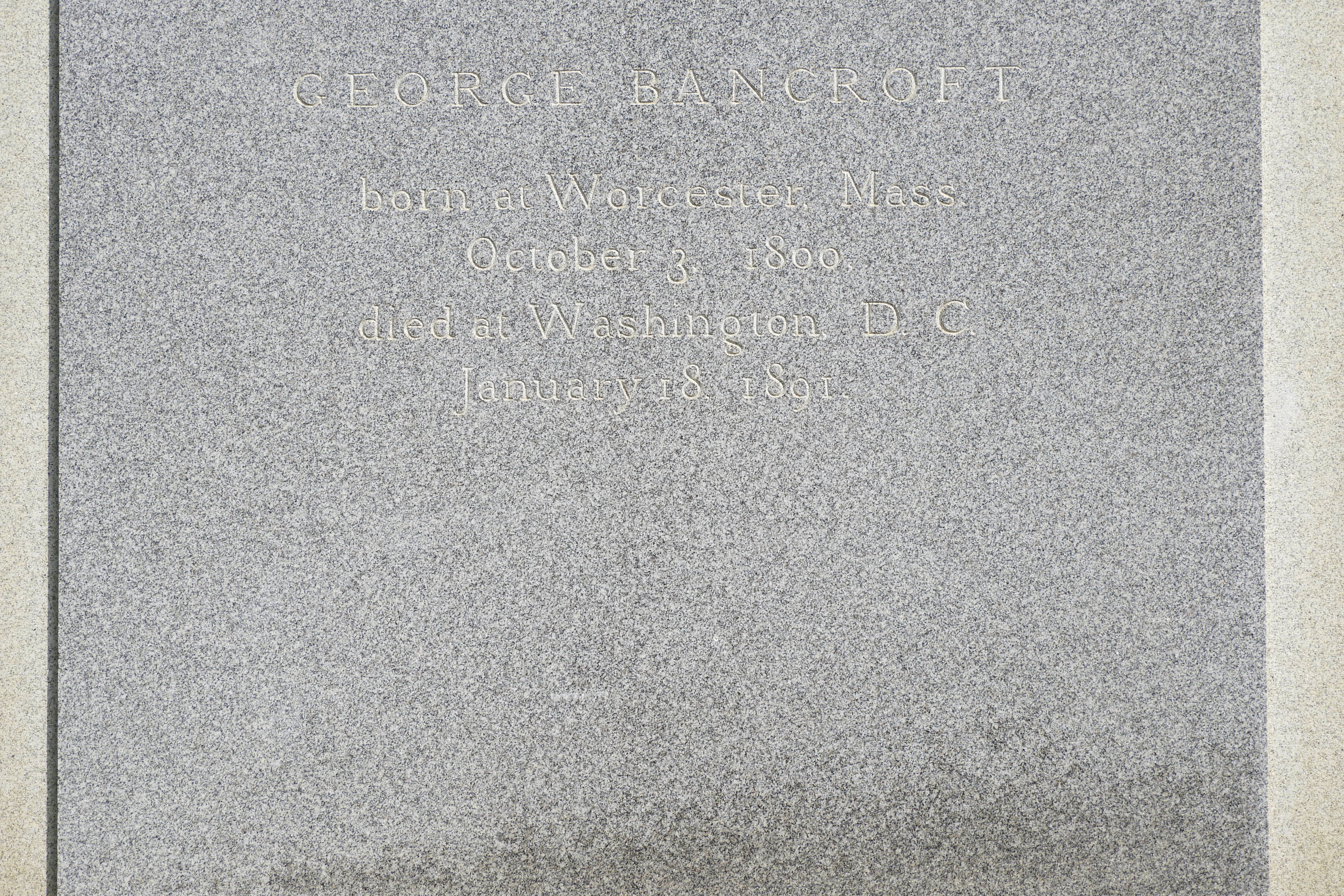US Secretary of the Navy, Educator, Historian. He is recognized as a 19th-century American historian who was often called the "Father of American history." Although some claim he is best-known for his ten-volume "History of the United States," others claim his fame came after establishing the U.S. Naval Academy at Annapolis in Maryland. Born one of thirteen children born to Aaron and Lucretia Chandler Bancroft, he was given a private education and graduated from Harvard University in 1817 before embarking on a career as a minister and devoting six months toward an M.A. at the Harvard Divinity School. After leaving Harvard University, he traveled to Germany the following year, attending Georgia Augusta University in Göttingen. After being awarded a doctorate in 1820, he embarked on a grand tour of Europe, including Paris, Italy, Switzerland, and London, before returning home in 1822. He mastered several languages. During this time, he had an opportunity to be exposed to various learned men. After a one-year appointment as an instructor in Greek at Harvard, he traveled back to Germany to help with the establishment of high school-level education facilities. In 1823, he published a volume of poetry and the following year, he opened the Round Hill School in Northampton, Massachusetts, but he left the school in 1827. He began to translate various pieces from German to English for "North American Review" and other magazines. In 1827, Bancroft married Sarah Dwight, the daughter of a prominent merchant-banker, and the couple had four children before his wife died of the complication of childbirth in 1837. In 1838, he married the widow Elizabeth Bliss, with whom he had a daughter. In 1834, he published his first volume of "History of the United States" and, over the next forty years, finished the ten-volume collection. Politically, he was a Democrat and was an unsuccessful candidate for several elected offices, including governor in 1844. He held the position of collector at the port for several years. In 1844, President James K. Polk appointed him Secretary of the Navy, and after relocating to Washington, D.C. for this post, he served as acting Secretary of War. While in this post, he established the U.S. Naval Academy at Annapolis in October of 1845. In 1846, President James Polk offered him an ambassadorship in London, largely to help settle the Oregon boundary dispute, which he held for the next three years. President Andrew Johnson appointed him US minister to Prussia, enabling him to return to Germany, remaining in Berlin for seven years. President Ulysses S. Grant appointed him minister to the German Empire in 1871, negotiating agreements with various principalities relating to naturalization and citizenship issues, which became known as the "Bancroft Treaties." Upon returning to the United States, he continued to write, including a biography of President Martin Van Buren. In 1885, the American Historical Association, then only two years old, elected him as president. The Massachusetts Historical Society has 72 document boxes, 12 volumes, and one oversize box of his professional papers.
US Secretary of the Navy, Educator, Historian. He is recognized as a 19th-century American historian who was often called the "Father of American history." Although some claim he is best-known for his ten-volume "History of the United States," others claim his fame came after establishing the U.S. Naval Academy at Annapolis in Maryland. Born one of thirteen children born to Aaron and Lucretia Chandler Bancroft, he was given a private education and graduated from Harvard University in 1817 before embarking on a career as a minister and devoting six months toward an M.A. at the Harvard Divinity School. After leaving Harvard University, he traveled to Germany the following year, attending Georgia Augusta University in Göttingen. After being awarded a doctorate in 1820, he embarked on a grand tour of Europe, including Paris, Italy, Switzerland, and London, before returning home in 1822. He mastered several languages. During this time, he had an opportunity to be exposed to various learned men. After a one-year appointment as an instructor in Greek at Harvard, he traveled back to Germany to help with the establishment of high school-level education facilities. In 1823, he published a volume of poetry and the following year, he opened the Round Hill School in Northampton, Massachusetts, but he left the school in 1827. He began to translate various pieces from German to English for "North American Review" and other magazines. In 1827, Bancroft married Sarah Dwight, the daughter of a prominent merchant-banker, and the couple had four children before his wife died of the complication of childbirth in 1837. In 1838, he married the widow Elizabeth Bliss, with whom he had a daughter. In 1834, he published his first volume of "History of the United States" and, over the next forty years, finished the ten-volume collection. Politically, he was a Democrat and was an unsuccessful candidate for several elected offices, including governor in 1844. He held the position of collector at the port for several years. In 1844, President James K. Polk appointed him Secretary of the Navy, and after relocating to Washington, D.C. for this post, he served as acting Secretary of War. While in this post, he established the U.S. Naval Academy at Annapolis in October of 1845. In 1846, President James Polk offered him an ambassadorship in London, largely to help settle the Oregon boundary dispute, which he held for the next three years. President Andrew Johnson appointed him US minister to Prussia, enabling him to return to Germany, remaining in Berlin for seven years. President Ulysses S. Grant appointed him minister to the German Empire in 1871, negotiating agreements with various principalities relating to naturalization and citizenship issues, which became known as the "Bancroft Treaties." Upon returning to the United States, he continued to write, including a biography of President Martin Van Buren. In 1885, the American Historical Association, then only two years old, elected him as president. The Massachusetts Historical Society has 72 document boxes, 12 volumes, and one oversize box of his professional papers.
Bio by: Linda Davis
Inscription
Historian of America
He made it the high purpose of his life
Which nearly spanned a century
to trace to origin of his Country
to show her part in the advancement of man
and from the rare resources
of his genius, his learning and his labor
to ennoble the story of her birth
Secretary of the Navy
1845-46
Minister to Great Britain
1846-49
Minister to Germany
1867-74
Consider that I labored not for myself only, but for all them
Ecclus XXXIII 17
Family Members
Advertisement
See more Bancroft memorials in:
Explore more
Sponsored by Ancestry
Advertisement



















